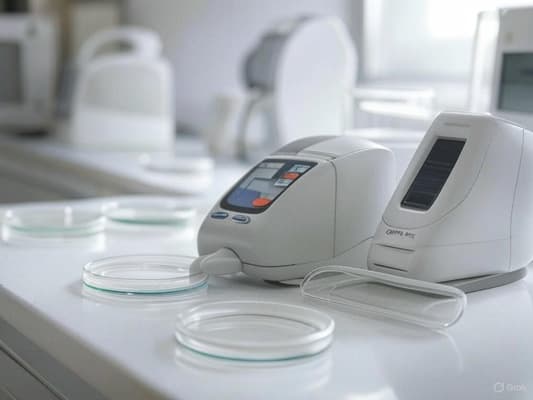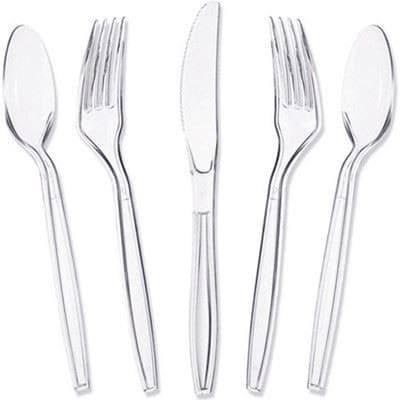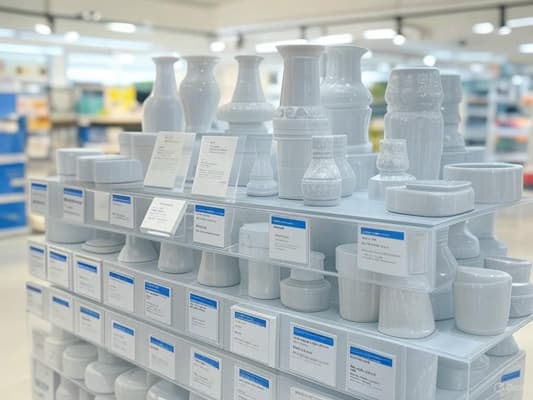General Purpose Polystyrene (GPPS), a type of POLYSTYRENE, is a thermoplastic polymer that is comparatively inexpensive, easy to handle, and appreciated for its superb clarity. Its range of applications is very extensive. As one of the everyday accessible common plastics, General-purpose polystyrene caters to multiple technical branches such as packaging, consumer goods, or even medical apparatuses. Due to GPPS’s transparency, its rigidity, and the ability to be shaped into countless forms, it is invaluable for product requirements. GPPS plastic products are essential for day-to-day life and range from retail plastic packaging to disposable cutlery.
GPPS GRADES
| GRADE | PRODUCER | MFR (gr/10 min) | VICAT SOFTENING POINT (°C) | DATASHEET |
|---|---|---|---|---|
| GPPS 1028 | MASHREGH ZAMIN | 2.4 | 102 | download |
| GPPS 1038 | MASHREGH ZAMIN | 3.1 | 101 | download |
| GPPS 1034 | MASHREGH ZAMIN | 3.1 | 90 | download |
| GPPS 1084 | MASHREGH ZAMIN | 8 | 91 | download |
| GPPS 1233 | MASHREGH ZAMIN | 23 | 85 | download |
| GPPS 1047 | MASHREGH ZAMIN | 4.2 | 100 | download |
| GPPS 1077 | MASHREGH ZAMIN | 7 | 100 | |
| GPPS 1067 | MASHREGH ZAMIN | 5.5 | 100 | download |
| GPPS 1115 | MASHREGH ZAMIN | 11 | 91 | download |
| GPPS 1144 | MASHREGH ZAMIN | 14 | 92 | download |
| GPPS 1160 | TABRIZ | 2.5 | 105 | download |
| GPPS 1460 | TABRIZ | 6.5 | 103 | download |
| GPPS 1540 | TABRIZ | 11 | 91 | download |
| G 1161 | TAKHTE JAMSHID | 4 | 104 | download |
| G 1551 | TAKHTE JAMSHID | 9 | 98 | download |
| MP08 | MOHEB | 11 | 105 | download |
| G 3160 | JAM | 2-3.5 | >104 |
What is General Purpose Polystyrene (GPPS)?
General Purpose Polystyrene is a polymer obtained from the polymerization of styrene monomers, which consists of chemically linking individual styrene molecules into long chains. The resulting thermoplastic is clear and rigid and is easily moldable. A free radical technique of polymerization is employed in combination with a catalyst to produce styrene monomers. The polymer’s simplicity in structure, being predominantly made of hydrogen and carbon, makes it easier to process and economically feasible, making it suitable for a variety of applications.
| Composition | Made from styrene monomers |
|---|---|
| Properties |
Clear, hard, and brittle; can be solid or foamed
|
|
Temperature behavior
|
Solid at room temperature, flows above 100°C (glass transition temperature)
|
|
Usage
|
Protective packaging, containers, cutlery, modeling, and more
|
|
Environmental impact
|
Not biodegradable; accumulates in environments, especially in waterways |
Key Properties of GPPS
General Purpose Polystyrene possesses a unique set of physical and chemical characteristics that qualify it for a wide range of General purpose polystyrene gpps uses:
- Transparency: It contains excellent clarity and, therefore, finds General purpose polystyrene uses in products like transparent packaging and signage.
- Rigidity: It is rigid, or rather, the material does not alter its form with ease and is not elastic under standard circumstances.
- Brittleness: Although rigid, GPPS is very brittle and can readily break or crack from impact or stress.
- Thermal Stability: It possesses poor resistance to heat and typically deforms when warmed to approximately 100°C (212°F). GPPS is not best suited for application in hot environments.
- UV Sensitivity: General-purpose polystyrene degrades if exposed to ultraviolet (UV) light over the long term, resulting in discoloration and a reduction in mechanical strength.
| GPPS Properties | |
|---|---|
| Property | Value |
| Density | 1.04 - 1.07 g/cm³ (grams per cubic centimeter) |
| Water Absorption | Low (0.03 - 0.1%) |
| Transparency | Transparent to translucent |
| Mechanical Properties | |
| Tensile Strength | 35 - 60 MPa (megapascals) |
| Elongation at Break | 1.5 - 4% |
| Flexural Strength | 70 - 100 MPa (megapascals) |
| Izod Impact Strength (Notched) | 1.5 - 3 J/m (joules per meter) |
| Rockwell Hardness | R85 - R115 |
| Thermal Properties | |
| Melting Point | 180-260°C (degrees Celsius) |
| Heat Deflection Temperature (HDT) | 75 - 95°C (degrees Celsius) |
| Coefficient of Linear Thermal Expansion | 6 - 8 × 10⁻⁵ K⁻¹ (per Kelvin) |
| Vicat Softening Temperature | 90 - 105°C (degrees Celsius) |
| Electrical Properties | |
| Dielectric Strength | 15 - 30 kV/mm (kilovolts per millimeter) |
| Surface Resistivity | 10¹⁴ - 10¹⁶ Ω/sq (ohm per square) |
| Volume Resistivity | 10¹⁵ - 10¹⁸ Ω·cm (ohm-centimeter) |
| Optical Properties | |
| Refractive Index | 1.59 - 1.60 |
| Light Transmission | 88 - 92% (for 3 mm thickness) |
| Chemical Properties | |
| Resistance | Resistant to acids, alkalis, and aqueous solutions Susceptible to organic solvents, oils, and fats |
| Processing Properties | |
| Processability | Good flow properties Suitable for injection molding, extrusion, and thermoforming |
It’s important to note that the specific values of these properties may vary depending on the grade, additives, and processing conditions of the GPPS material.
Advantages of Using GPPS
General Purpose Polystyrene has various benefits, which is why it is widely applied in different sectors:
- Cost-effectiveness: Its most basic justification for mass application is its cost-effectiveness concerning other plastics. GPPS is inexpensive to manufacture, lowering manufacturing expenses for businesses.
- Ease of Processing: General-purpose polystyrene can be easily shaped, extruded, and heat-formed, so that complex forms and designs may be produced using simple equipment and at low cost.
- Clarity: The clarity of GPPS makes it an appropriate product to be used for applications that require clean visibility, such as in retail packaging, clamshell packaging, and protection covers.
- Lightweight: It is lighter in weight compared to other plastics and, as such, most suitable for use where weight is an issue, like in packaging or disposable items.
Disadvantages of GPPS
Though there are numerous benefits of General Purpose Polystyrene, there exist some limitations to applying it:
- Brittleness: It is liable to crack or break when stressed or subjected to impact, thereby restricting its applications in high durability and flexibility requirement-based applications.
- Limited Temperature Resistance: General-purpose polystyrene has poor heat resistance and starts to soften at relatively low temperatures; therefore not suitable for use at high temperatures.
- Chemical Sensitivity: It can be degraded on exposure to certain chemicals, limiting its application in processes requiring exposure to aggressive solvents or severe conditions.
- UV Degradation: Upon aging, prolonged exposure to UV radiation may make GPPS yellowish brown, deteriorate the material, and affect its shape, limiting the material’s application in outdoor mounting unless UV stabilization treatment is carried out.
Applications of General Purpose Polystyrene
General Purpose Polystyrene is a product of general application used in broad-ranging industries. The most common applications include:
1. Packaging
- General-purpose polystyrene has extensive utilization in packaging for products requiring transparency and stiffness, such as containers for foodstuffs, clamshell packages, and blister packages.

2. Medical Devices
- Certain medical devices, like diagnostic tools, test strips, and petri dishes, utilize GPPS because of its clarity and sterilizability.

3. Consumer Goods
- General-purpose polystyrene is applied to the manufacturing of toys, household appliances, and disposable eating utensils as it is lightweight to mold and inexpensive.

4. Electronics
- It is often used in electronic devices like device enclosures and protective coverings, where clarity and stiffness are required.

5. Signage and Display Products
- Its clarity and ability to be molded into intricate shapes make GPPS an excellent material for point-of-purchase displays and signs.

Other than these sectors, General Purpose Polystyrene is used on laboratory equipment, stationery, and other domestic things, offering the best match of price, lucidity, and convenience.
GPPS vs. Other Plastics
General Purpose Polystyrene (GPPS) is a general-purpose thermoplastic, which is known for clarity, ease of processing, and flexibility in a broad range of applications. Compared to other plastics like High Impact Polystyrene (HIPS), Polypropylene (PP), and Polyethylene (PE), there are some special characteristics of GPPS.
GPPS vs. HIPS (High Impact Polystyrene):
Although they are both polystyrene plastics, GPPS vs HIPS, the main difference is that HIPS is a modified grade of GPPS in that rubber additives have been added to enhance its toughness. HIPS is therefore better suited to products that must be tougher. General-purpose polystyrene is brittle and hard, and therefore best for products where moldability and clarity are a bigger issue than toughness.
GPPS vs. Polypropylene (PP):
Polypropylene (PP) has superior chemical and mechanical properties over GPPS. PP finds applications in demanding uses like motor parts and food item containers due to its durability and improved melting point. General-purpose polystyrene finds applications in terms of transparency and rigidity for less mechanically stressing applications like disposable containers, eating utensils, packaging, and consumer products.
GPPS vs. Polyethylene (PE):
Polyethylene (PE) has excellent chemical resistance, flexibility, and lower cost production than GPPS. While PE is used extensively for materials that must be flexible and resilient (General purpose polystyrene examples like plastic bags, bottles, and toys), GPPS is chosen for clarity and higher hardness. For clear displays and packaging, General-purpose polystyrene is usually used since it offers better aesthetics.
Manufacturing Process of GPPS
To manufacture General Purpose Polystyrene, polymerization is essential because of its role in forming the polymer chains that give General-purpose polystyrene its specialized features.
Polymerization Methods: GPPS may be polymerized via two fundamental methods:
- Bulk Polymerization: Styrene monomers are polymerized in bulk. While this technique yields a high-purity polymer with a uniform weight and is relatively inexpensive, the control over the polymer’s properties is loose.
- Suspension Polymerization: In this method, styrene monomers are dissolved in an aqueous medium to yield a polymer solution where particle size distribution is tighter and control over other polymer attributes is heightened. This method is primarily used in GPPS production because the end products are better in both consistency and quality.
Processing Methods: Having been polymerized, GPPS is made into final shapes by use of several processing techniques:
- Injection Molding: One of the most widely used techniques where GPPS in a molten state is forced into molds to produce items like packaging and household plastics.
- Extrusion: The GPPS is melted and is forced through a die in order to yield various continuous shapes such as slim rods, sheets, and films, which can be further sectioned into various sizes and shapes.
Sustainability and Recycling of GPPS
The General Purpose Polystyrene (GPPS) has been an increasingly concerning factor, especially against the backdrop of environmental concerns over plastic waste.
Recyclability:
General Purpose Polystyrene can be recycled, and recycling is typically in the form of melting down the polymer to form new products. Because it is low in cost and so widely available, however, General-purpose polystyrene products are not as highly targeted for recycling as more expensive plastics. Recycling General-purpose polystyrene has been improved through more advanced sorting technology and methods of removing impurities, allowing GPPS recycling to become increasingly feasible.
Environmental Impact:
General Purpose Polystyrene is relatively less harmful to the environment compared to certain other plastics due to its comparatively simpler chemical structure, which can be recycled without any complex processes. However, like most plastics, it can contribute to environmental pollution if not disposed of properly. Therefore, recycling as much as possible and reducing the consumption of single-use GPPS products are the solutions to reducing their environmental impact.
Sustainable Production Innovations:
General Purpose Polystyrene production innovations for sustainability include the development of bio-based substitutes for polystyrene, improving energy efficiency in production, and utilizing recycled General-purpose polystyrene as feedstock for new product manufacturing. All these steps reduce the carbon footprint of GPPS manufacturing and facilitate a circular economy.
Suppliers of GPPS
Suppliers like Shobeir Shimi play a key role in the supply of General Purpose Polystyrene (GPPS) to various industries. As a market leader, Shobeir Shimi supplies high-quality General-purpose polystyrene with different grades that meet different manufacturing needs, from food packaging to consumer electronics. They deliver their products in bulk or customized specifications to meet the unique needs of manufacturers. Shobeir Shimi’s passion for quality and sustainability makes them a source of dependable supply to businesses looking to integrate GPPS into their products. The processing expertise of polymer is what ensures the performance and reliability of GPPS material, the core of the businesses utilizing high-quality plastics.
Why Choose GPPS for Your Project?
General Purpose Polystyrene possesses some advantages that qualify it as the best choice for numerous applications. Among the primary reasons why firms should use GPPS are:
- Cost-Effectiveness: It is among the most affordable plastics, and hence it is a suitable choice for firms wanting to reduce their cost of production.
- Clarity and Aesthetics: The high clarity of General-purpose polystyrene makes it suitable for applications where transparency and visual appeal are essential, such as packaging, food packaging, and display cases.
- Ease of Processing: It is easy to mold and shape, and it is a favorite among injection molding and extrusion processes. The ease of processing allows manufacturers to create complex shapes and products within a short period.
- Versatility in Applications: It varies from disposable utensils to electrical enclosures, affecting a wide range of industries due to its versatility and adaptability to various applications.
Using General Purpose Polystyrene for your project can assist in achieving a balance between quality, performance, and cost reduction. Therefore, it is a versatile product for many industries.
Conclusion
General Purpose Polystyrene (GPPS) is a useful material that has numerous applications in consumer goods, packaging, and electronics. Its low cost, processability, and transparency make it a very appealing material for most manufacturers. Relative to other plastics like HIPS, PP, and PE, GPPS is better for applications where rigidity and transparency are preferred, but it is weaker than some of its alternatives where impact resistance is required. Information on the production process, environmental impact, and merits of General-purpose polystyrene is the key to allowing companies to make informed decisions about its use. As recycling and environmentally friendly production processes evolve further, GPPS remains a viable material in the plastics industry, representing a balance between utility and environmental viability.
